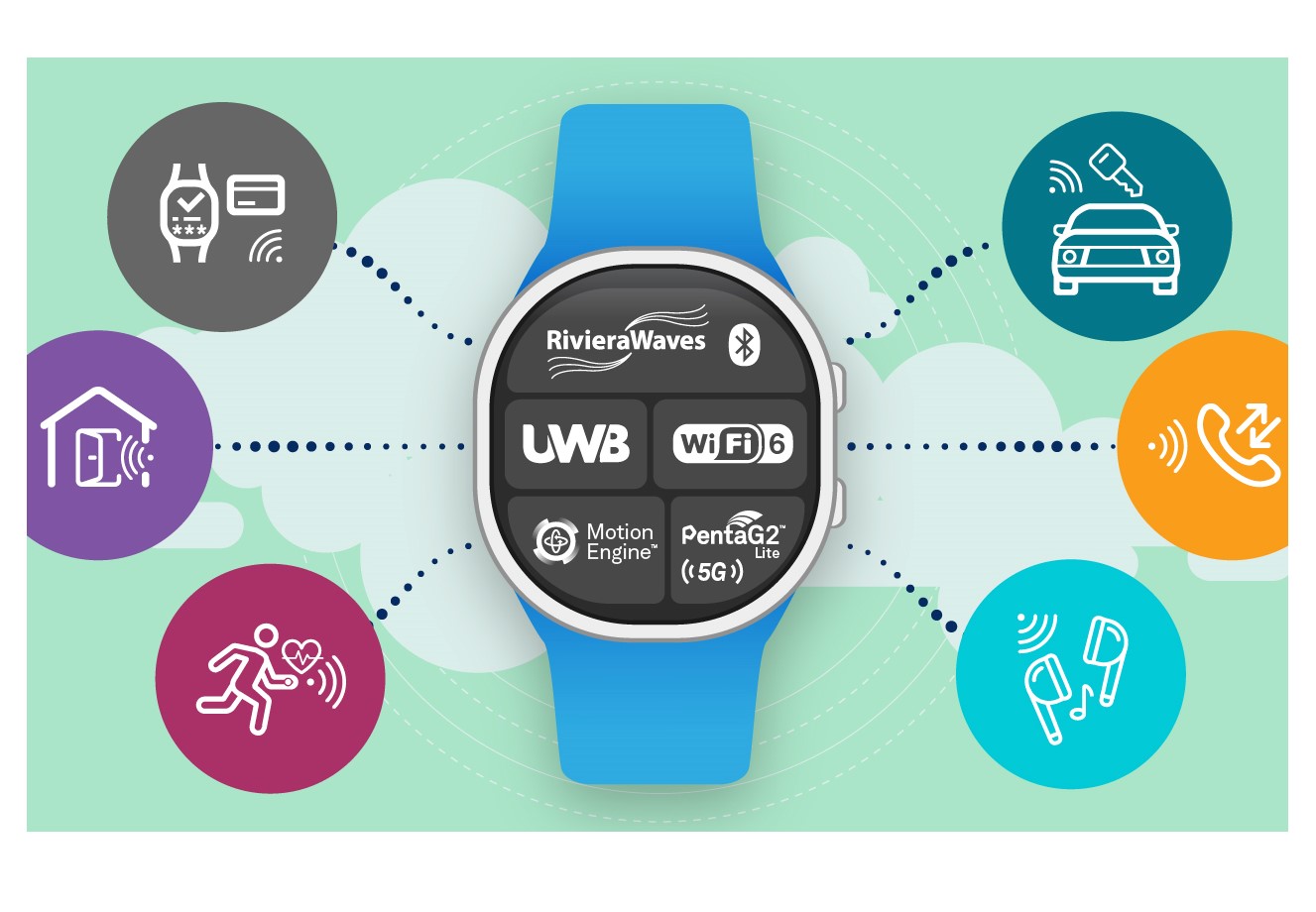Untethering smartwatches: introducing 'RedCap'
This article from Paddy Williams, Director of Product Marketing for CEVA’s Connectivity Business Unit looks at the wearables market and considers how innovation, such as RedCap (reduced capacity), can improve smart watches.
To date, smartwatches have been viewed primarily as accessories to smartphones. Cool, but somewhat redundant when you also must carry a phone in your pocket. And not just any phone. It should usually be a compatible device, probably from the same supplier. You need two compatible devices, you must remember to keep them both charged, and you must remember to carry both with you. Doesn’t exactly sound like convenience, does it?
Nevertheless, the latest generation of smartwatches are proving incredibly popular. With ABI forecasting more than 236 million smartwatches to be shipped annually by 2026, this is shaping up to be an area of intense competition with rapid innovation. New products will compete based on fashion and technical features. Echoing the early days of the smartphone market, feature integration wrapped up with user convenience will be the key to winning market share.
Untethered connectivity: 5G RedCap
The next major step forward for user convenience is untethering the smartwatch from the phone. Today’s smartwatches lack cellular connectively, instead relying primarily on a Bluetooth tether to the phone, augmented in some cases with Wi-Fi for in-home use and system updates.
But next generation cellular in the form of 5G RedCap (Reduced Capacity) is set to remove that limitation. RedCap offers LTE performance at a fraction of the power, making cellular a very practical option in a watch. Although relatively new, with a formal launch scheduled as part of the 3GPP Release (Rel) 17 in mid-2022, RedCap is already a hot topic with chip designers for the next generation of wearable devices. RedCap enables compact and low cost devices by using narrow 20MHz channels, one to two antennas, and support for true half duplex operation.
This configuration can still support bitrate in the range of 80 to 150Mbps. RedCap will also benefit from all the goodies of the 5G network, including extended frequency bands (mmWave and unlicensed), outdoor positioning, network slicing, and improved spectral efficiency. Redcap promises to unleash 5G adoption beyond the smartphone, enabling integration into the wider mass market of wearable and other IoT devices.

Features, features, features…
Today’s premium smartwatches are already integrating many of the applications that are popular on smartphones. In addition to calendar reminders and timers, the information appetite for messaging, social media, weather updates, stock tracking, and so on, must be satisfied.
The smartwatch form factor, with direct skin contact, also enables health monitoring, with premium devices offering monitors for blood pressure, blood oxygen, ECG, sleep quality, fall detection, and many more. Many of these features rely on merging or fusing information from multiple sensors. Indeed, Sensor Fusion, with accurate, configurable and low power sensor calibration and management is critical to the user experience.
Position tracking through GPS or similar satellite navigation systems is also a must-have feature on the smartwatch. However, given the considerable power consumption of traditional GPS tracking, a more power efficient implementation is necessary. Indeed, for many use cases we don’t necessarily need real-time position information refreshed every second.
By using snapshot positioning coupled with network assistance and IMU (inertial measurement unit) dead reckoning, the GPS function can sleep for longer periods of time between active measurements. With an update every 5 minutes, the smartwatch will still enjoy several days of battery life. Further, the intermediate nature of snapshot positioning lends itself to software implementation on a shared processor resource, meaning much lower incremental die cost.
Other new features that are finding traction with users include secure digital keys (such as for cars), secure payment support, and ticket validation in public transport services. These features increasingly employ a coordinated combination of Bluetooth with UWB (ultra-wideband) for maximum accuracy. UWB provides ranging and direction finding capability with unrivalled security and reliability – with accuracy down to a few centimeters.
User interface
One big concern with smartwatches is the limited physical interface. Spoken commands, taps and gestures (again, those that are IMU-sensed) will be the norm, and will be augmented by contextual awareness from the process of sensor fusion to improve the user experience. The limited battery capacity in a smartwatch is driving innovation here in order to intelligently process naturally spoken commands on a low power budget, welcoming some exciting developments in neural network AI processing.
Power consumption
There is no doubt that feature integration will drive and differentiate smartwatches. Ultimately however, the smartwatch form factor is constrained by the limited battery capacity. While full-day operation is mandatory, bear in mind that being able to spend multiple days (not just one) between charges is highly desirable. To balance the demands, custom design – rather than just re-purposing chips from smartphones – is essential.
Multiple SoCs, even advanced SiP (system-in-package) implementations will not deliver best-in-class power performance. Instead, the next level of integration is required, merging application processor, sensor fusion, AI voice/sound processor, cellular and wireless (Bluetooth, Wi-Fi, UWB, and so on) on one silicon die, with advanced, coordinated power management throughout.
Alternatively, ‘chiplets’ may also provide the necessary integration with additional platform flexibility (for example, a chiplet for the wireless interfaces helps decouple both the challenges of RF circuitry integration and cellular standard qualification).
Time to imagine real convenience
Standalone smartwatches finally are possible. And ready to catch a wave of millennials, seniors, fitness fans and others who want the advantage of an intelligent wearable device without needing to lug around a smartphone too. However, fast time to market is essential in the consumer segment.
This is where CEVA’s decades of experience in IP development and licensing can provide real value, augmenting the chip designer’s own resources to achieve a leading-edge smartwatch product.









